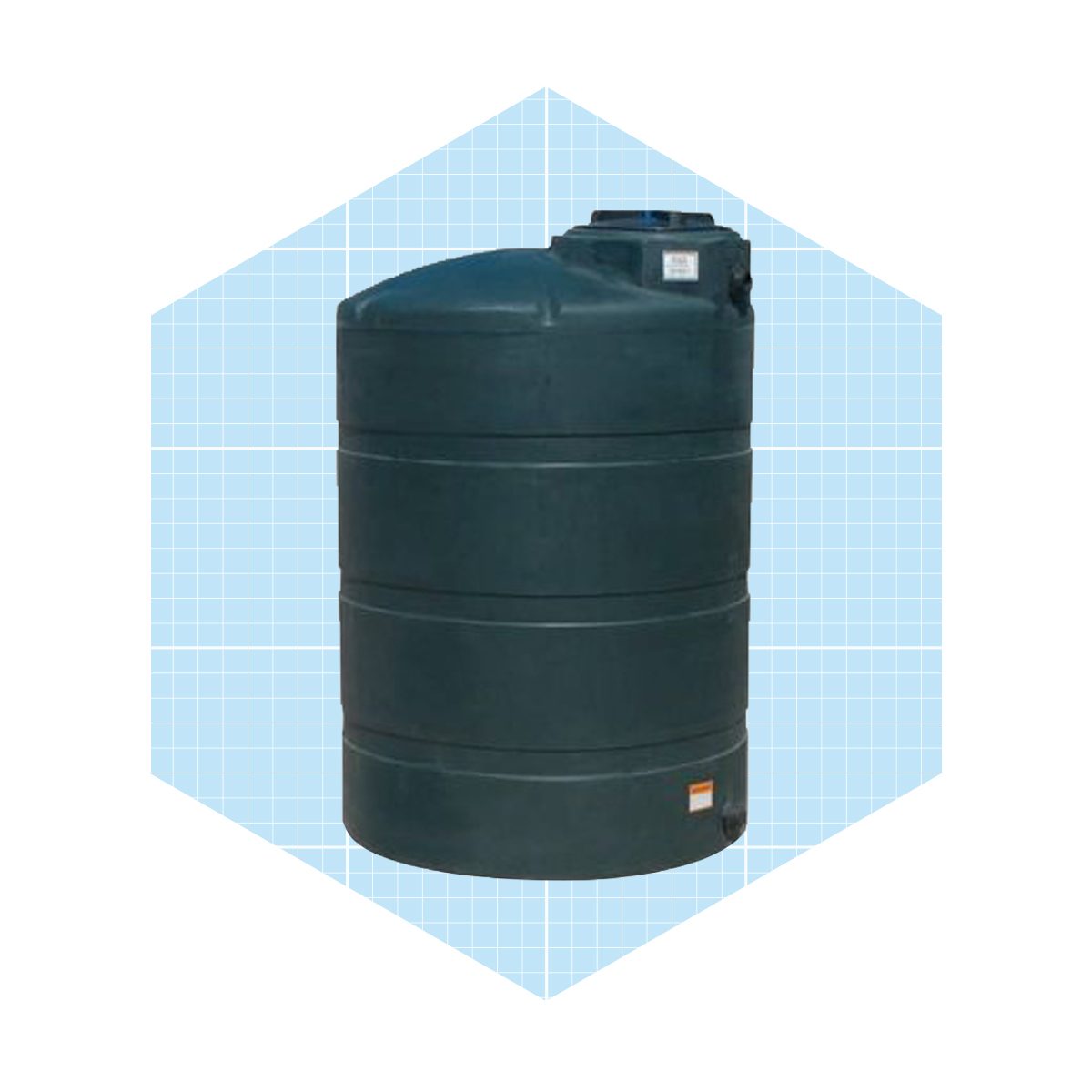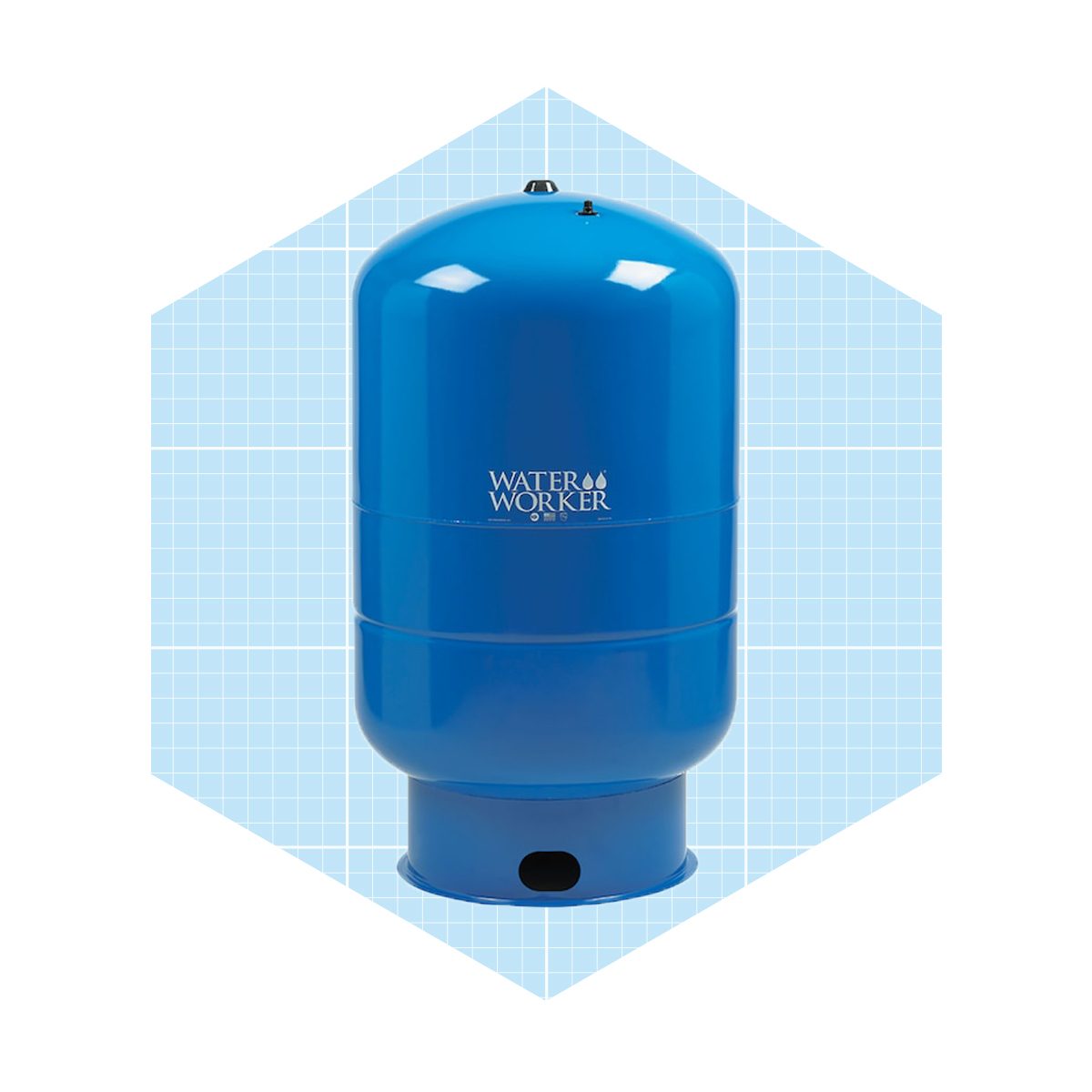The four water storage tanks on the California property where I live are the lifeblood of our household.
A 500-gallon steel tank feeds an additional dwelling unit (ADU) nestled in a wooded clearing we call “the meadow.” A 500-gallon stainless steel tank feeds the main house, and a 5,000-gallon plastic tank feeds the garden and holds water for emergencies.
The stainless steel tank feeds into an 86-gallon pressure tank to provide the main house with pressurized water. The other two tanks are gravity-fed.
We have a deep well (200+ feet), and it would be impractical for the well pump to supply water directly to our faucets. The pump would have to run every time someone ran water or flushed a toilet, and the water would come at a low pressure.
Instead, the pump feeds our storage tanks, each fitted with a float or pressure switch. The pump runs only when the level in the tanks drops too low.
Because of this setup, the well pump cycles on only occasionally. And the 86-gallon tank, pressurized by a jet pump, ensures we have great water pressure in the house. The garden and ADU are situated several hundred feet below their respective tanks, so gravity ensures they have good water pressure.
What Is a Water Storage Tank?
A water storage tank is any large vessel that holds water for future use by residential, agricultural or industrial purposes. Sizes range from several gallons to tens of thousands of gallons.
Water storage tanks can be pressurized or unpressurized, and some can even be buried. Because unpressurized tanks are maintained at atmospheric pressure, they are also known as atmospheric tanks. The tank that supplies water to the house is a pressure tank, meaning it’s hermetically sealed (airtight).
Not everyone with a well needs an atmospheric storage tank. If the well is shallow enough — typically less than 100 feet deep — the well pump can feed pressurized water directly into a pressure tank. Deep wells, however, generally require atmospheric storage tanks, often connected to a pressure tank via a jet pump. From the pressure tank, water flows directly to the plumbing system.
How Does a Water Storage Tank Work?
An atmospheric tank is little more than a cistern with a lid, but a pressure tank is more complex. It features an air-filled chamber separated from the water supply by a rubber membrane.
When water is pumped under pressure into one of these tanks, the membrane compresses the air. When you draw water from the tank, the compressed air pushes the water out under pressure.
Large atmospheric storage tanks, ranging in capacity from 500 to 5,000 gallons and more, usually must be mounted on a concrete pad. Water is piped in directly from the well pump, and a float inside the tank monitors the level and shuts off the pump when the tank is full.
Some tanks have a mechanical float similar to the one inside a toilet tank, while other employ a pressure switch, which contains a gravity-sensitive electrical device to switch the pump on and off. These tanks have valve outlets at the bottom to which you can connect a 1-1/4- to 2-in. water pipe or fire hose adapter.
Pressure tanks typically have a 1- or 1-1/4-in. inlet and outlet on the bottom. Water enters the inlet from the pressure pump, which may be in the well if it’s shallow enough or connected to a nearby atmospheric tank. The outlet connects to the plumbing system. A gauge monitors the pressure.
It cycles on when it falls below a preset level called the cut-in pressure, typically 30 to 40 pounds per square inch (psi). It cycles off when it hits the cut-out pressure (typically 50 to 60 psi).
What Size Water Storage Tank Do I Need?
If you’re considering an outdoor tank for your well water, size it according to the needs of your household. Bare minimum is one gallon a day, per the Federal Emergency Management Agency (FEMA).
Generally speaking, 200 gallons is a realistic minimum size for an average family, but a 500 gallon tank is better. It holds enough water to sustain you through an extended power outage. On the other hand, if you just want to catch rainwater for your garden, a 50-gallon drum might be all you need.
If you need water for irrigation as well as personal use, you need a much larger tank. Our 5,000-gallon tank feeds our garden and provides emergency water storage for fire protection, ongoing concern in hot, arid California. You should always check local regulations for the proper installation of large water storage tanks and acceptable materials.
In our area, local codes require metal tanks, which are less susceptible to fire damage than plastic or fiberglass. Our plastic tank is grandfathered in and we have no plans to replace it. But if we were to install a new tank, it would have to be metal.
Three Best Water Storage Tanks To Buy
You have choices, so it pays to shop around. If you decide on a plastic storage tank, you may be disappointed to find they only come in dark colors (green or black), but there’s a reason for that. Dark colors filter UV light and prevent the growth of algae and pathogens in the water.
Best 500-gallon plastic water storage tank

The Norwesco 500-Gallon Green Plastic Water Tank is six feet tall and four feet in diameter. The relatively narrow base makes it easy to mount on a concrete platform, and the two-inch outlet provides enough flow for fire control.
This tank features a removable cover and a pre-drilled one-half-inch inlet port on the top, making it easy to connect the piping from a well pump. This tank durable and well-reviewed by buyers.
Best large metal water storage tank

Our steel and stainless steel water tanks are the same age, and we noticed rust contamination in the steel one. If you’re looking for a large tank and must install a metal one, your best bet is one like the 3,750-gallon Stainless Steel Cistern Tank from Texas Metal Tanks.
It’s pricey, but this stainless steel tank will outlast a steel one every time while guaranteeing a clean water supply. Even the rivets are stainless steel.
Best well pressure water storage tank

If you have a large household served by a well, you’ll need a large pressure water storage tank to avoid overworking your pressure pump. The Water Worker 86-Gallon Pressurized Well Tank is one of the largest. Its polypropylene liner separates water from the steel shell, keeping metallic odors and contaminants out of the water.
This tank comes pre-charged to 38 psi and rated for a maximum of 100 psi, far greater pressure than most homes need. The 1-1/4-in. outlet provides easy connection to plumbing systems.
Did you miss our previous article...
https://rsssuperfeeds.com/life-hacks/tough-nuts-are-no-match-for-this-sturdy-breaker-bar-set






